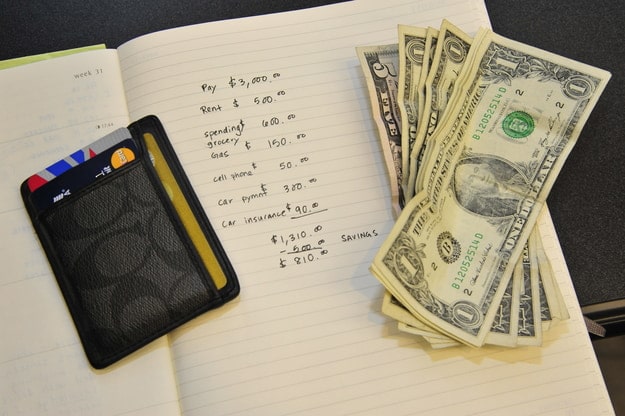How To Increase Cash Flow: 10 Good Bookkeeping Habits

Managing other people’s cash flow is obviously an essential part of bookkeeping. Still, you have to spend some time managing your cash flow as well.
We can divide cash flow management into two overarching categories: managing inflow and managing outflow. Here are some tips to look over each in an organized fashion and determine hơ to increase cash flow in your bookkeeping búiness.
Int this article:
1. Managing Cash Inflow (Accounts Receivable)
Remote contractors like online bookkeepers have to make sure themselves that all their clients are paying on time. Here are a few tips on how to do just that.

Make It Easy to Pay
Create a footer for all your invoices that spells out, to the letter, all the various ways in which your clients can pay. The more you include, the better.
For example, you might clarify that payment can be made either by bank transfer, check, Payoneer, or Paypal. In this case, you should provide all the information for your business bank account, your full home or business address for mailing a check, and your complete payment info for the websites.
Let clients know that direct bank transfer is the least expensive method of payment, because banks charge fewer fees for it than for other methods.
Don’t Be Lenient on Payment
Some clients might want to round their payments up or down to a nice, round figure. Don’t accept this. Even if they are trying to pay $500 rather than the owed $482.65, return the additional $17.35. A flexible approach to payment like that establishes a precedent, which often causes payment issues in the future.
Also, don’t include language like “due within 30 days of receipt,” because payees will definitely take advantage of that leniency. Instead, let them know that payment is due immediately. It may be unrealistic, but it’s better to be strict.

Keep A Ledger of Money Owned
The unfortunate truth is that some clients will take their sweet time with the payment, even if they are reminded regularly.
It’s your responsibility as a contractor never to forget about any of the money you are owed. Keep an Excel spreadsheet, or at very least a notebook, that reminds you of all outstanding payments.
Some bookkeepers are hesitant to keep sending frequent reminders about outstanding payments because they’re afraid it’s obnoxious. Get over this fear. In business, it’s fine to be persistent when it comes to money.
A useful extension of this idea is the automated payment reminder tools included with most bookkeeping software. It will take a lot off your plate, and it will do your “dirty work” for you.
Offer Discounts for Prompt Payment
Many bookkeepers offer small discounts to clients who pay quickly.
For example, you might include in your invoice footer that those who pay within two working days will receive a $50 discount on their next invoice.
It may cost you a bit of money in the short term, but it’s worth it if it helps you maintain your bottom line and avoid any hefty late fees from banks.

Delegate!
If managing your cash inflow is stretching you to your breaking point, don’t be afraid to hire a professional to help you with it! Freeing up time to do more jobs can be an excellent investment.
Please don’t be shy to ask for help or free advice from other professional bookkeepers in online communities like our Bookkeeper Lab.

2. Managing Cash Outflow (Accounts Payable)
You need to make sure you’re not spending too much and that you’re getting the most possible out of the money you are spending. A few protips to do so include:
Track Every Expense
Track every business-related expenditure, no matter how small. That will enable you to rake in the most money possible when tax season rolls around, and you get to write off a whole slew of expenses.
One easy way to do this is by getting a credit card just for your business. Having a card will group all of your business expenses on one page. Most card statements even categorize activity, which makes them a helpful business tool for reviewing where your business is spending the most money.
You’ll also want to regularly reconcile your bank accounts to avoid any inconsistencies that will cause you grief in the long run.

Spread Out Your Long-Term Payments
You may have had the experience of one day receiving a huge annual charge for a service that you had forgotten about. It’s quite a shock, and it can be a significant inconvenience unless you have been setting aside money for the charge.
To keep this from happening, it’s a good idea to keep track of all your recurring fees, no matter how long the term is. Make payments for each of the services at the end of every month, depositing the amounts you don’t need actually to submit yet into a bank account.
Doing so will prevent any nasty surprises when payment is due, and it will even earn you a little bit of money in bank interest.
Figure Out Where to Invest
No, we’re not talking about the stock market. We’re talking instead about your own business. What areas are doing particularly well, and which ones need an infusion of cash to be kicked up to the next level?
It’s a good idea to review your financial data monthly, so you don’t miss any developments.
Stay On Top of Payment
Just as you appreciate prompt payment, so do your suppliers. Pay them promptly to maintain good relationships with them.
You might receive some discounts for paying early, and you’ll ensure long-lasting business relationships. Also, suppliers tend to favor clients who pay promptly by delivering products and services on time and in good condition.
Finding hơw to increase the cash flow is a cornerstone of any business. Experiment to find out how to manage both cash inflow and cash outflow efficiently and effectively, and you’ll be on your way to running a successful bookkeeping operation.

Finding hơw to increase the cash flow is a cornerstone of any business. Experiment to find out how to manage both cash inflow and cash outflow efficiently and effectively, and you’ll be on your way to running a successful bookkeeping operation.
DO YOU HAVE ANY TIPS, TRICKS, OR LIFEHACKS FOR HOW TO IMPROVE CASH FLOW THAT YOU DON’T SEE MENTIONED HERE? SHARE THEM WITH US IN THE COMMENTS SECTION BELOW!




